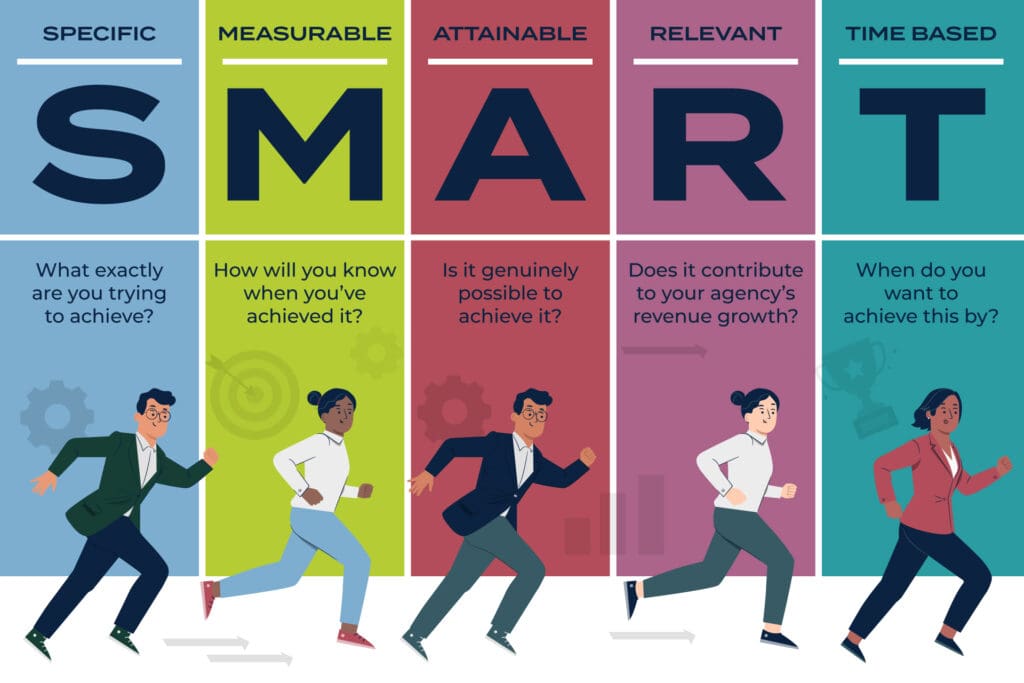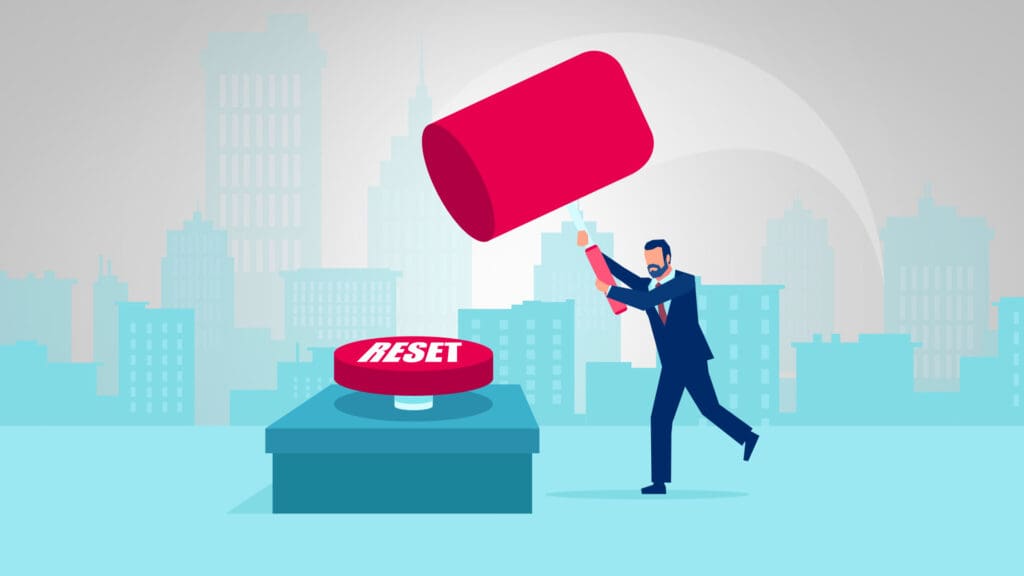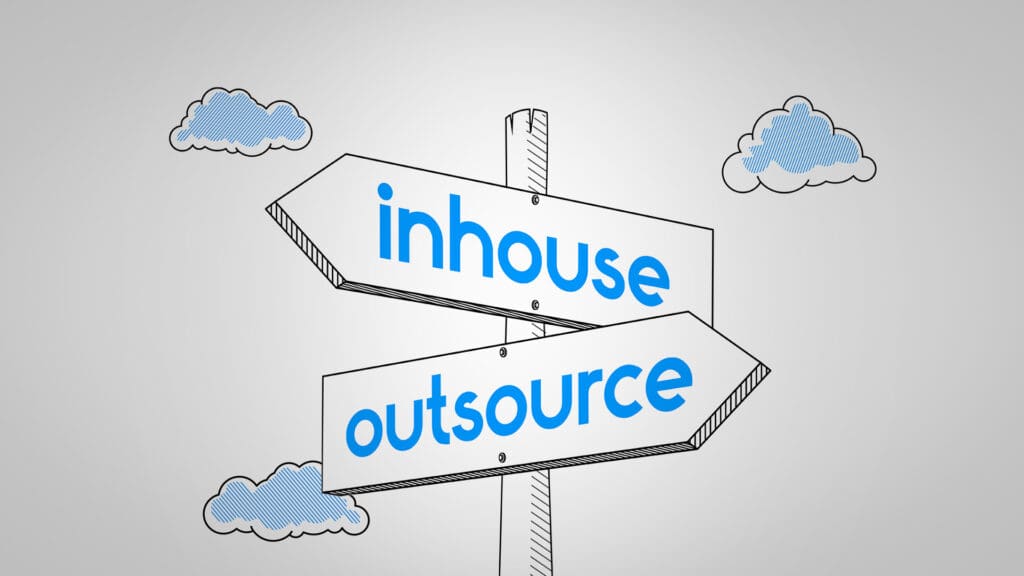
Maximizing Your Marketing Agency Partnership: Strategies for Lasting Success
Ah, the three-legged race. From school field days to church picnics, we’ve all found ourselves awkwardly tethered to a sweaty teammate and hobbling toward a finish line at some point. You remember how it goes: You’re both heading in the same direction and have the same goal. But if you’re not in sync, you stumble and fall—maybe even outright faceplant. When businesses and marketing agencies partner up, it can feel a little like that. Success for both of you depends on common goals, communication, getting into a rhythm and a healthy dose of trust.
When done right, agency partnerships can drive serious growth. But that only happens when the relationship is set up for success. Things tend to go kaput when expectations are vague, communication breaks down, or no one’s quite sure what success even looks like. Scope creep creeps in. KPIs get fuzzy. Deadlines shift. Momentum slows.
This guide is here to help you avoid all of that. In this edition of Plain Talk, you’ll learn how to work more effectively with your marketing agency. We’ll go over how to kick things off with clarity, communicate without confusion, and build a partnership that gets better over time. On your mark, get set, let’s go!
- Pre-Race Check: What To Ask a Marketing Agency Before You Sign
- Starting Line: Aligning Pace, Goals, and Expectations
- Running in Sync: Building a Strong Day-to-Day Relationship
- Team Signals: Communicating Effectively With Your Marketing Agency
- Course Corrections: Managing Scope Creep, Approval Bottlenecks, and Shifting Priorities
- The Mid-Race Huddle: Evaluating Progress Without Losing Momentum
- Ready for a Better Marketing Agency Partnership?
Pre-Race Check: What To Ask a Marketing Agency Before You Sign
Before you hit the starting line, take a moment to assess whether you’re truly ready to run with this agency. Beyond pricing and portfolios, these questions can help you understand how well your partner matches your pace, priorities, and working style.
- How do you onboard new clients, and what do the first 30 days look like? You want to know if they have a clear plan for getting started or if you’re expected to jump in without guidance.
- What do you need from us to do your best work? A successful partnership goes both ways. This question helps uncover what support or resources they’ll expect from your team.
- What happens if something goes off track? Every engagement hits bumps. Ask how they handle missed deadlines, shifting priorities, or underperforming campaigns.
- How do you prioritize when everything feels urgent? This gives insight into how they manage pressure, stay organized, and keep your work moving forward without losing focus.
- How do you help us stay aligned with long-term goals? Short-term wins matter, but so does the big picture. Make sure they know how to keep strategy front and center as work evolves.
Starting Line: Aligning Pace, Goals, and Expectations
Now the race is on! You ran a great RFP. You’ve signed with your agency, and now it’s time to get moving as one team. What happens in these early days sets the tone for everything that follows. This is your chance to get aligned, build momentum, and avoid unnecessary missteps.
- Goals: Start by turning your big-picture goals into something actionable. Use “SMART” goals. SMART goals make sure everyone’s aiming at the same finish line. For example, instead of saying you want “more leads,” try “increase qualified leads by 25% over the next six months.” These clear goals give your agency a focused target and a way to track progress along the way.

- Roles and responsibilities: Next, clarify roles and responsibilities. Who’s handling day-to-day communication on your side? Who gives final approvals? Establishing this upfront keeps things moving and reduces delays as work starts to roll in.
- Group communications: Now’s also the time to figure out how you’ll work together day to day. Will you meet weekly or bi-weekly? What tools will you use for project updates or feedback? And what’s the best way to communicate—Teams, Slack, email, or scheduled calls? Agreeing on a rhythm early helps prevent confusion down the road.
- KPIs: Lastly, make sure you’re aligned on how success will be measured. Confirm which KPIs really matter to your business, whether it’s lead quality, conversion rates, or brand awareness. Knowing what you’re aiming for keeps everyone focused and accountable.
Marketing agency onboarding checklist
A successful onboarding process gives your agency the context and tools they need to do their best work. Use the checklist below to guide what you should prepare and discuss during your kickoff meeting.
✅ Brand and Strategic Assets
Give your agency a strong sense of your identity, audience, and previous marketing efforts.
- Brand guidelines (logos, colors, fonts, tone of voice)
- Audience personas or target demographic info
- Previous market research work
- Messaging frameworks or taglines
- Content calendars or campaign overviews from the past 6–12 months
- Competitor insights or positioning documents
✅ Access to Tools and Platforms
Make sure the agency can access the systems they’ll need to execute and track work.
- Google Analytics or GA4
- Google Search Console
- Ad accounts (Google Ads, Meta, LinkedIn, etc.)
- Website CMS or landing page platforms
- Email marketing platforms (like Mailchimp, HubSpot, or Klaviyo)
- Project management or file-sharing tools, if applicable
✅ Performance History and Current Benchmarks
Help them understand what’s been working and where improvement is needed.
- Reports from recent marketing campaigns
- Key metrics tied to sales or lead generation
- Website traffic trends and top-performing content
- Notes on past wins, challenges, or marketing pivots
✅ Communication and Workflow Preferences
Set the stage for a smooth working relationship.
- Preferred cadence for check-ins (weekly, biweekly, monthly)
- Communication tools your team uses (Slack, Zoom, email, etc.)
- Main point of contact and decision-makers on your team
- Problem escalation contacts
- Ideal turnaround times for deliverables and feedback
- Feedback and revision process
✅ Agency Support Needs
Ask what will help your agency do their job well.
- Clarify timelines for deliverables and campaign launches
- Invite the agency to outline their ideal onboarding flow
- Confirm what they need from you to stay on track
- Ask for documentation of their process or workflows
Running in Sync: Building a Strong Day-to-Day Relationship
Earlier this year, agency matchmaker Setup released the results of their annual Marketing Relationship Survey. Clients cited dissatisfaction with delivery as the number one reason for ending an agency relationship. However, agencies reported leadership changes or budget cuts as being the top causes. Dissatisfaction was near the bottom of their list.
Similarly, agencies believe they understand their clients, but clients don’t feel the same. In fact, lack of understanding was the second most common reason clients end the relationship, while agencies rank it as the least important. Talk about some massive disconnects!
Strong agency relationships don’t happen by chance. They’re built through open communication, mutual respect, and a clear understanding of who’s doing what. When the partnership runs smoothly, you’ll see better ideas, faster execution, and stronger results.
Build trust through transparency and shared wins
Trust is a must. It starts with being open about your goals, budget, challenges, and expectations. When your agency understands the full context, they can offer better recommendations and flag potential issues early. In return, they should be just as transparent about what’s working and what needs to shift. Making space to celebrate wins and talk openly about results helps both teams stay motivated and aligned.
Give the kind of feedback that drives better work
Your honest feedback has a direct impact on the quality of the work you get. Be timely and specific. If something feels off, explain what’s missing and why it matters. Avoid vague comments and keep feedback focused on how to move the project forward. It also helps to consolidate notes on your side before responding, so your agency isn’t juggling mixed messages from multiple people.
| Actionable Client Feedback | Non-Actionable Client Feedback |
| “Can we make the headline more benefit-driven? Right now, it feels too focused on features.” | “Make it pop.” |
| “The tone feels a little too professional. We’re aiming for a more approachable, fun voice.” | “It needs more wow factor.” |
| “This image feels too stocky. Do you have something that feels more authentic or people-focused?” | “Can you jazz it up a bit?” |
| “We’d like to highlight [specific service] more prominently since it’s a current priority.” | “This doesn’t feel quite right.” |
| “The colors are a bit too muted. Can we explore something brighter to align with our spring campaign?” | “We’re just not loving it.” |
| “We’re concerned this might not resonate with [specific audience]. Can we tweak the language to speak more directly to their pain points?” | “Something’s off, but I can’t put my finger on it.” |
| “Let’s switch the CTA to something more action-oriented, like ‘Get Started’ instead of ‘Learn More’.” | “Can you take it to the next level?” |
| “The layout feels crowded. Could we try adding more white space for better readability?” | “It needs more energy.” |
| “This doesn’t reflect our updated messaging. Let me share our latest brand positioning doc for context.” | “We want it to be more modern.” |
| “This feels a little flat visually. Can we add a graphic element or subtle animation to draw more attention?” | “Can you add some sparkle?” |
| “This doesn’t reflect our current tone of voice. Our brand is more confident and direct. Here’s an example from our recent campaign.” | “It’s not on brand” (without explaining how or why). |
| “We like the direction, but can you provide two variations with different headlines or imagery so we can compare?” | “Let’s try something different” (without giving new direction). |
Clarify roles to avoid confusion
Successful projects depend on knowing who’s responsible for what. Early in the relationship, take time to define internal roles. Who’s providing feedback? Giving approvals? Managing the timeline? Ask your agency to do the same on their side. When everyone knows their role, it reduces friction and speeds up decision-making.
Use documentation to stay aligned
Even great teams drop the ball sometimes when there’s no system in place. A shared calendar, task list, or project tracker can prevent confusion and keep work moving. Keeping documentation simple but consistent helps everyone stay on the same page, especially when projects become more complex or multiple team members are involved.
Team Signals: Communicating Effectively With Your Marketing Agency
Good communication is the glue that holds a strong agency relationship together. Once your goals are aligned, the key is staying connected in a way that’s consistent, efficient, and works for everyone involved. A little structure goes a long way in keeping things on track.
Establishing clear communication cadence and channels
Early on, talk about how often you’ll check in and what those check-ins will cover. Weekly calls are great for small updates or quick decisions. Monthly meetings give you a chance to review bigger picture progress and make sure priorities still make sense.
Pick tools that make it easy to stay in sync. That might be Teams or Slack for day-to-day messages, shared docs for feedback, or a project tracker that shows what’s in progress. What matters most is that everyone knows where to find updates and how to get questions answered quickly.
Avoiding common communication breakdowns
Most issues don’t start with major mistakes; they start with small miscommunications that add up over time. Missed emails. Confusing feedback. A lack of follow-up after a meeting. It’s death by a thousand cuts. These are easy to fix but even easier to overlook.
Be direct if something isn’t clear. If timelines feel too tight or feedback seems off, bring it up. Good agencies appreciate honesty because it helps them deliver better work. And when things are going well, let them know! Positive feedback keeps momentum going and helps build trust on both sides.
Course Corrections: Managing Scope Creep, Approval Bottlenecks, and Shifting Priorities
As projects progress, it’s normal for new ideas to surface or for business needs to shift. But even the best strategy can fall apart without alignment. That’s why it’s important to keep goals, scope, and timelines visible and regularly revisited. The smoother your internal process, the easier it is for your agency to stay focused and deliver great work.
Here are a few ways to stay aligned and keep projects moving:
- Keep a shared list of current goals, deliverables, and due dates
- Flag changes early, even if you’re not sure they’ll move forward
- Assign an internal owner to manage communication, approvals, and feedback
- Consolidate input before sending it to your agency to avoid mixed messages
- Use regular check-ins to talk through priorities and adjust when needed
- Ask your agency to speak up when something feels off-track or out of scope
- Trust your agency to handle execution while you focus on strategic decisions
The Mid-Race Huddle: Evaluating Progress Without Losing Momentum
You’re deep into the race now. The partnership is in motion, the early kinks have likely been worked out, and the team has found its rhythm. But before you head into the final stretch, it’s worth taking a strategic pause. Not a full stop, but a purposeful checkpoint to reflect, recalibrate, and fine-tune your approach.
Ask yourself and your agency a few key questions:
Are we pacing toward our goals?
Review the SMART goals you set at the start. Are you on track to hit those metrics? If not, what’s slowing you down? This is the time to look at progress honestly and identify any adjustments that might help you get back in sync.
Are all stakeholders still aligned?
Teams change. Priorities shift. It’s easy for misalignment to sneak in over time. A mid-race huddle helps surface any disconnects before they become roadblocks. Confirm that internal decision-makers and agency contacts are still working from the same playbook.
What can be optimized before the final stretch?
Maybe reporting needs to be simplified. Maybe approvals are lagging. Or maybe a new tactic is outperforming the rest and deserves more focus. Take a hard look at what’s working and what’s not so you can double down on the right things.
This is the perfect moment for a mini QBR, campaign pulse check, or strategy refresh. It doesn’t need to be a formal presentation, but it should be intentional. Come prepared with data, feedback, and next-step ideas on both sides. The goal is to keep momentum strong while sharpening your focus.
Ready for a Better Marketing Agency Partnership?
The best agency partnerships don’t rely on luck. They’re built on clarity, trust, and a shared commitment to getting things done. When you take the time to set expectations, define roles, and communicate openly, your agency becomes more than a vendor. They become an extension of your team.
Whether you’re just starting out or trying to get more from an existing partnership, the practices in this guide can help you avoid the usual friction. When an agency and the client are aligned, progress feels easier, communication gets smoother, and the wins come faster.
If you’re ready for an agency that runs beside you, not behind, let’s talk. Drop us a note or call us at 502-499-4205, and we’ll be happy to build partnerships that move your business forward.
Our Articles Delivered
Signup to receive our latest articles right in your inbox.




